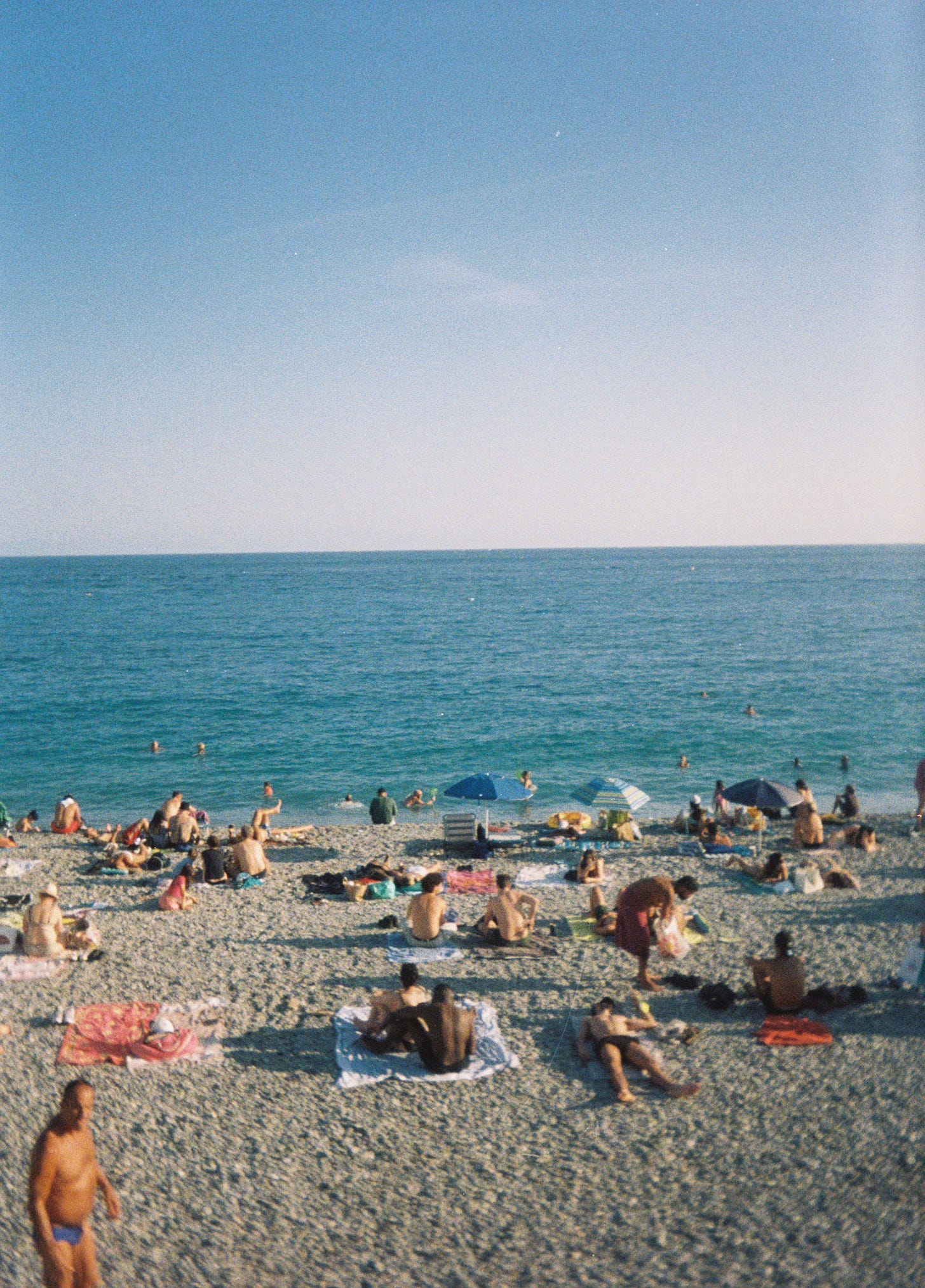We’ve All Built Something at the Beach
Why the beach is the rawest form of architecture we have
If architecture is manipulated space for a specific purpose, then there may be no easier place to analyze architecture than at the beach. As both Anna Halprin and Simon Unwin explain, we are at our most vulnerable there. There’s little built around us. We carry in whatever we might need. It's primitive, but also strangely complete.
Still, my personal experience at the beach has rarely felt threatening. For 11 years, I lived in Maracaibo, a coastal city where the beach wasn’t a faraway escape—it was just part of life. The lake wasn’t paradise. The water wasn’t always clean. But it was massive, always there, with the sun shining on it like a quiet promise. It didn’t need to be swimmable. It just needed to exist. That connection to a body of water, even a flawed one, feels ancient. It was home. I wouldn’t trade it for anything.
We went to the beach often. Same ritual every time. Four to six of us. Pick a spot—not too close to others, but not isolated either. Lay down our towels. Set up an umbrella. Music on. Snacks out. And then we’d just...be there. It’s funny, I never thought of it as “primitive,” even though I was in my barest body, in public, close to the forces of nature, with just enough to get through the day and only a few people to help if something went wrong.
Looking back, it was a kind of ceremony. Public, repeated, a low-stakes survival setup that made you feel safe, open, and grateful. Halprin was right when she said:
“The experience will allow you to create the enlargement; enabling you to bring from your personal experience into your family, into your community, into where you work & how you live & it all happened just through the process of living.”(Halprin, “Rituals of Space”)
The older I get, the more I realize how much of life is made up of these quiet, “primitive” actions. If we stepped back more often and noticed how much of our time is spent performing these rituals—eating, walking, waiting, resting—we might start designing spaces around them differently. More intentionally. More real.
Everyone becomes a space maker at the beach. You arrive, look around, feel the sun, the direction of the wind, the pull of the water—and then you set up. It’s instinct. With just a towel, maybe some chairs or an umbrella, you claim your little plot of sand. To make it through the day, you bring what you need to survive: drinks, snacks, maybe a speaker, maybe a couple of toys. That’s it.Kids will literally shape the space, building castles or digging moats, sculpting the sand with their hands. It’s all so basic, but no one ever wants to leave. I never did.It’s genuine, it’s human, and it’s design, the kind anyone who's ever been to a beach participates in without even thinking about it. But the fundamentals are all there: orientation, shelter, community, ritual. The beach reminds you that architecture is not always concrete and steel. Sometimes it’s cloth, sand, shade, and sun.
When I moved to L.A., I always thought, damn, the Pacific is huge. Think about it, you’re standing at the edge of America staring into nothingness. And technically, yes, if you went in a straight line, you’d hit Asia. That’s far. That’s deep. The Caribbean Sea doesn’t feel like that. You can feel that there’s land somewhere nearby, even if you can’t see it. There’s a comfort to it. The Pacific? It’s different. It's scary, deep, uninviting. But it’s mesmerizing. It pulls you in like a siren. Gorgeous, impossible to ignore, but not to be trusted.
Simon Unwin writes that the beach heightens our awareness:
“Of directions implicit in our bodies and in the landscape, and the possible relationships between them; of freedom from orthodox constraints; of detachment from the mundane and from other people; of being where our ancestors have been for millions of years…”(Unwin, “Constructing Place... on the Beach”)
There’s a kind of magic in those everyday moments by the water, not the postcard kind but the real kind. In Maracaibo, the lake was rough and imperfect, but it held us. It’s where we gathered, talked, and stayed too long in the sun. That feeling of belonging is the heart of architecture. It’s not just buildings; it’s how we carve out places for living, for being human, for feeling at home.






Justo iba a decir que como en la playa nada importa